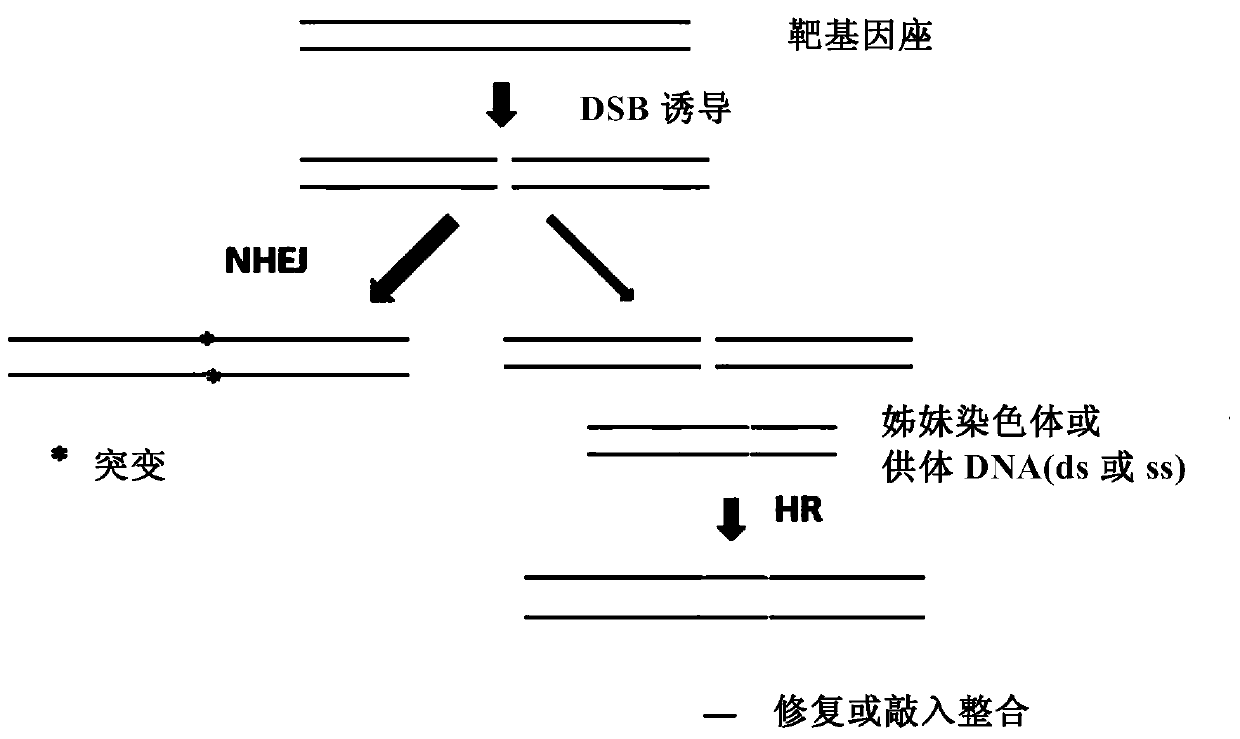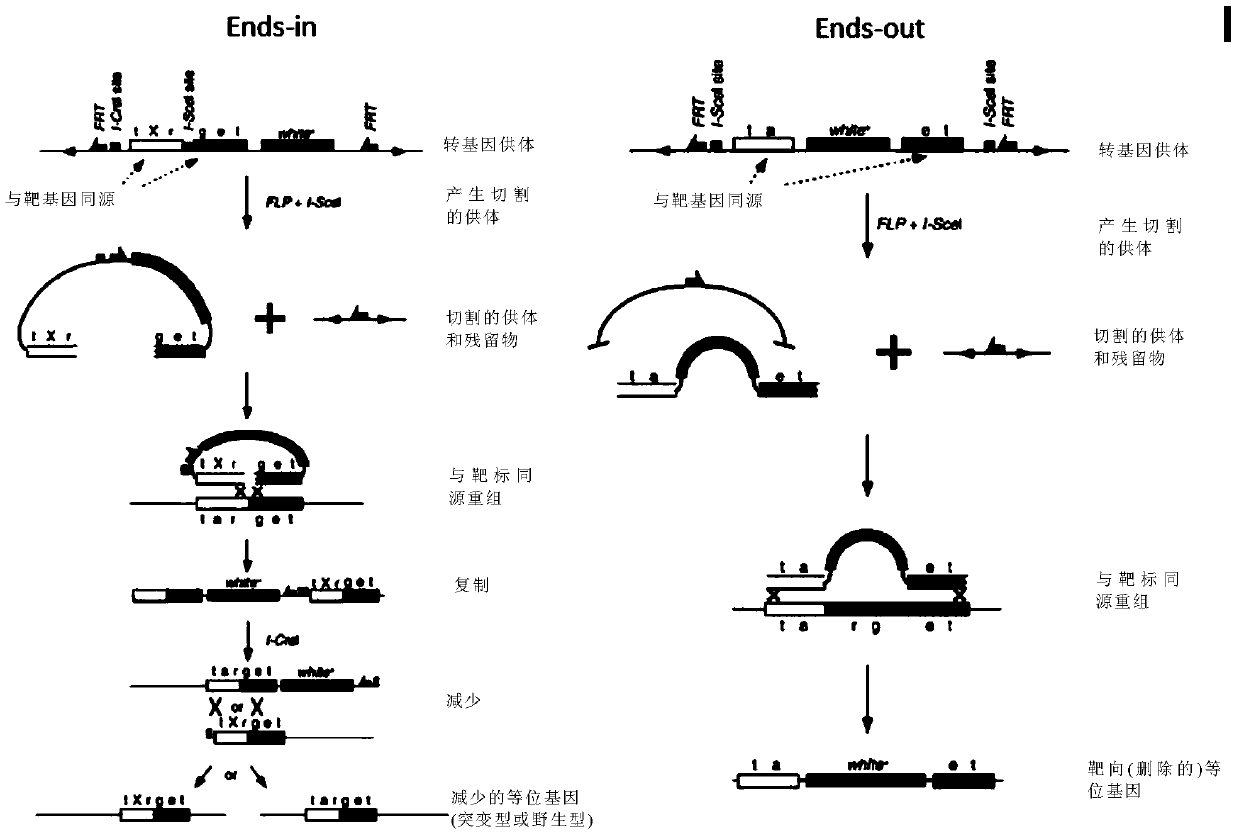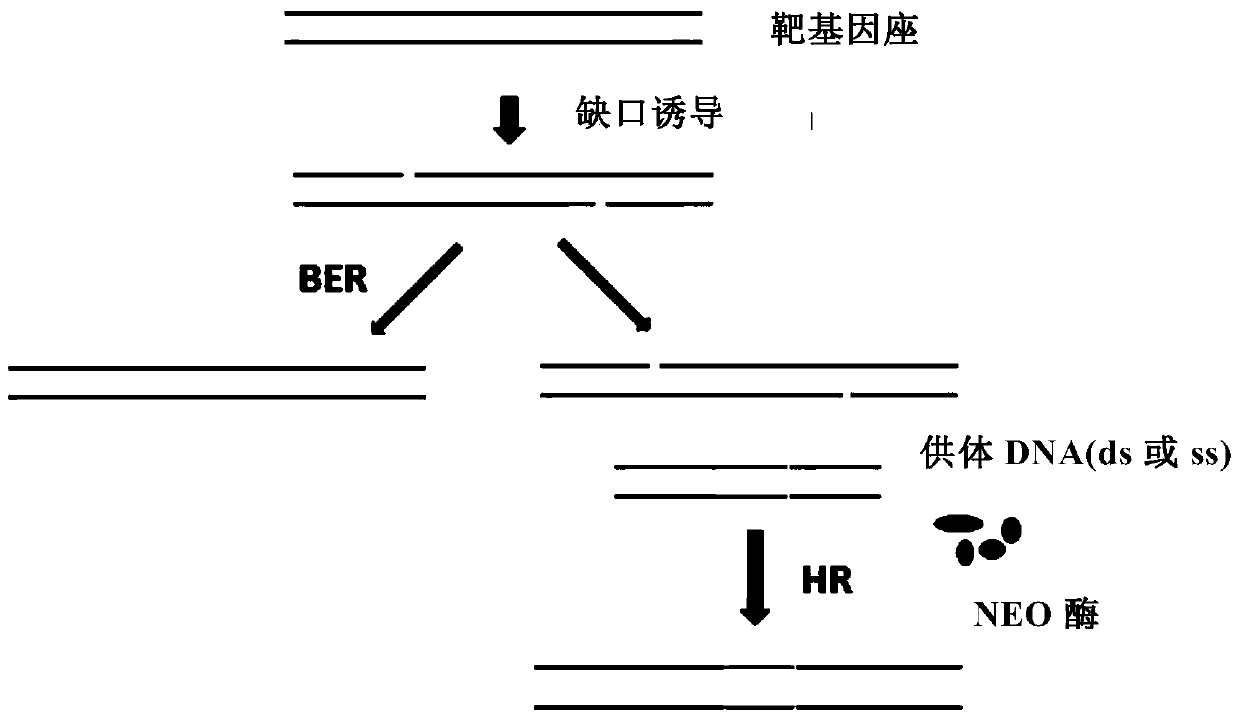Insect site-directed gene knock-in composition and method and application thereof
A technology of gene knock-in and composition, applied in the field of genetics transgenic technology and biological biology, can solve the problems of no practical value and cumbersome operation of other insect species
- Summary
- Abstract
- Description
- Claims
- Application Information
AI Technical Summary
Problems solved by technology
Method used
Image
Examples
preparation example Construction
[0219] 2.5 Preparation of the recombinant factor of the present invention
[0220] The reading frame sequence of the recombination factor of the present invention is cloned from the genome of the DH5alpha strain, and the codon optimization is performed after sequencing verification. Each Rec sequence was added to the nuclear sequence (nucleus localization sequence), and then the SP6 promoter sequence was added upstream of the entire sequence, and capped and polyA-added mRNA was obtained using an in vitro transcription kit, and mixed in different combinations- Freeze at 80°C for later use.
[0221] 2.6 Preparation of transgenic insect strains
[0222] Transgenic manipulations of medflies were performed according to standard methods. Inject yw genotype Drosophila, using black body yellow, red eye miniwhite or fluorescent eye 3xP3-Red as screening markers.
[0223] 2.7 Determining the KI efficiency of site-specific knock-in integration
[0224] The F0 generation of fruit flie...
Embodiment 1
[0226] Example 1. Mapping potential nicks at target sites of interest for Drosophila Hh integration
[0227] Previous studies used the Mino transposon-mediated integration cassette (Minos Mediated Integration Cassette, MIMIC) to generate a large number of random insertions on the Drosophila genome. There are gene integration sites on the MiMIC element, and researchers can select a suitable MiMIC insertion near the gene of interest to replace and introduce exogenous DNA fragments. However, this method cannot integrate foreign DNA fragments at designated positions of genes. In this example, the inventors took the Hh gene as the research object, and introduced an integration cassette (structure: attB1-yellow-attB2) into the second intron of the Hh gene, and the full length of the integration element was 10.2 kb.
[0228] The goal of Drosophila Hh genetic modification is to construct transgenic Drosophila strains, insert attB sites into endogenous Hh gene loci, and carry phenotyp...
Embodiment 2
[0235] Example 2. Design of Exogenous Donor DNA Templates
[0236] Such as Figure 5 The donor DNA template was designed as shown, with 1 kb of homologous sequence upstream of the upstream nick (upstream homology arm) and 1 kb of homologous sequence downstream of the downstream nick (downstream homology arm). The attB-yellow-attB coding sequence was added at the integration site. This element comprising upstream and downstream homology arms and attB-yellow-attB is molecularly cloned into the pBluescript II vector (Agilent's plasmid vector), and the plasmid is amplified and extracted to become an exogenous donor DNA (see SEQ ID for the nucleotide sequence NO:13).
[0237] TGCTGCTGCCATGGAATTCCAAAGAAAATGCACCTTCCCAGTGGCCAGCCCGAAATTCCCATTGATGCATTTTGGTAAACAGAGACAGGCGGACACACAAAAGTGTAGAAACAATAAAAATCGGATTAAATACATATGGCTGGCGGTCTATAAAACCCATAATCGATGTGGATGGACGAAAGGGGAATGGGATCGGAAAGAGAATAGGAATCGGAATCGAAATCGGGCCCAAAAGAACACACGAAATGGACAAAAGATTCTGGGGAGATGGAGAGAAGGAAGCGCGGTAGTAACAAGAAAAATTGGTGT...
PUM
 Login to View More
Login to View More Abstract
Description
Claims
Application Information
 Login to View More
Login to View More - R&D
- Intellectual Property
- Life Sciences
- Materials
- Tech Scout
- Unparalleled Data Quality
- Higher Quality Content
- 60% Fewer Hallucinations
Browse by: Latest US Patents, China's latest patents, Technical Efficacy Thesaurus, Application Domain, Technology Topic, Popular Technical Reports.
© 2025 PatSnap. All rights reserved.Legal|Privacy policy|Modern Slavery Act Transparency Statement|Sitemap|About US| Contact US: help@patsnap.com



